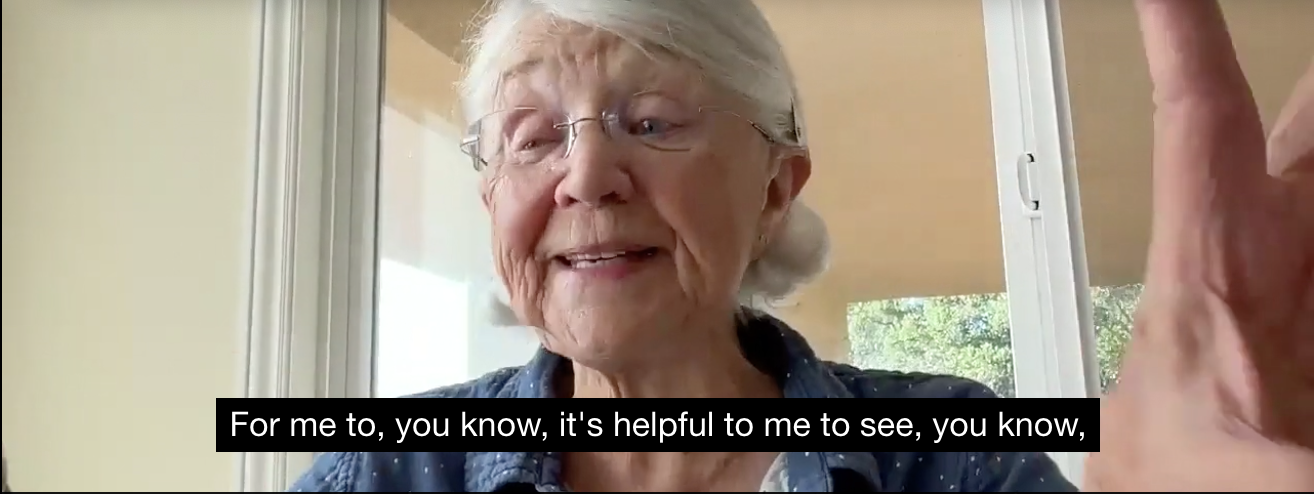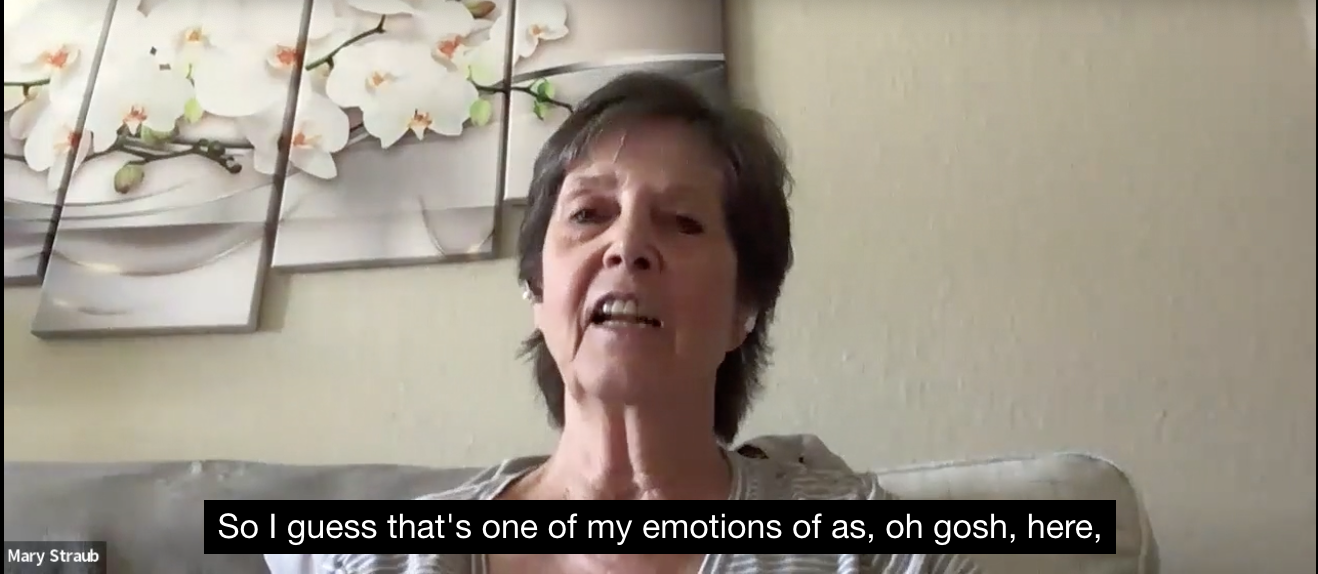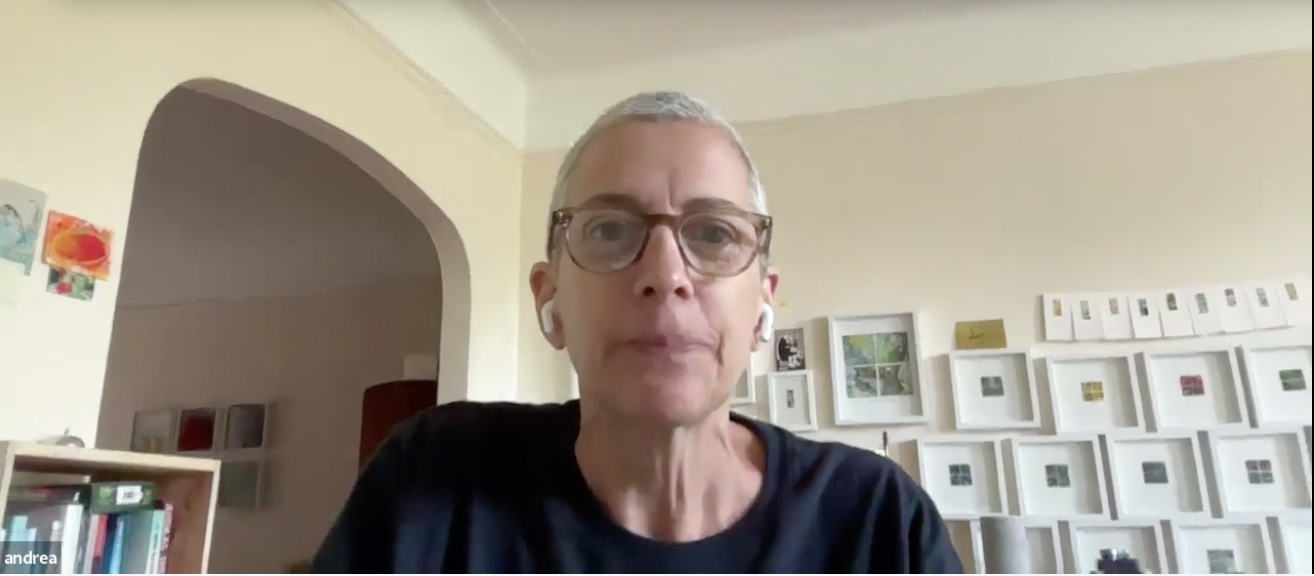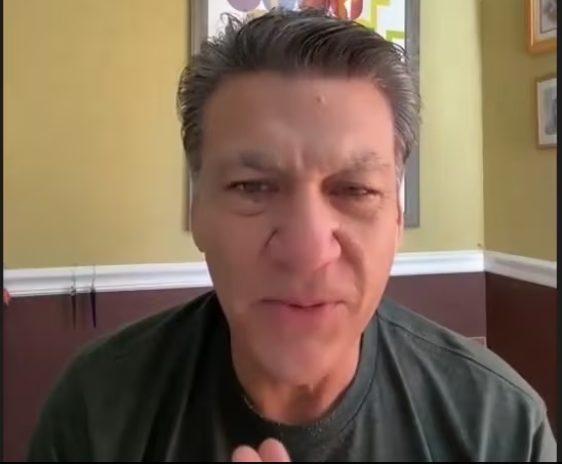A few years ago, I watched a movie that made me cry—a rare occurrence. But as tears slipped down my face, I realized the film wasn't to blame. In that moment, a quiet voice (let's call it intuition) asked: What if you're not really seeing what's in front of you? What if, beneath every emotional surge, you'd find a hidden belief shaping your whole experience? That very question is at the heart of Living Miracles Book Club's journey through Paul and Mitha's conversation—one where perception, emotion, and self-honesty are powerful gateways to healing. Whether you're reading lips, captions, or listening with headphones, this post is for you. We're diving into how the stories you tell yourself become the lens of your world, and how gently questioning them can set you free. Let's begin.
When the World Feels Wrong: Why Perception Isn’t Fact
Have you ever had a moment when everything around you just felt off? Maybe you were upset by something at work, or a relationship felt strained, and you couldn’t shake the feeling that the world itself was the problem. According to A Course in Miracles Lesson 2, what you’re experiencing isn’t actually about the world at all. It’s about perception—and perception is not fact.
Let’s break this down. Perception as projection is a core idea in A Course in Miracles. The lesson says, “I have given everything I see all the meaning that it has for me.” This means that what you see and feel is filtered through your own beliefs, fears, and expectations. You’re not seeing reality; you’re seeing your own mind projected outward. Research shows that our emotional reactions often stem from these internal projections, not from the events themselves.
Paul and Mitha, drawing from their study of A Course in Miracles Lesson Two, highlight how the ego shapes perception. The ego clings to old patterns and judgments, coloring every experience. When you blame outside events—or even yourself—for your pain, you’re actually falling into a trap. The ego uses blame to keep you feeling separate from peace, reinforcing the illusion of separation from your Source. Studies indicate that blame perpetuates this false sense of division, making healing through ownership even more important.
“You don't have to interpret, judge, or even understand the world, although you can choose how you perceive it.”
This advice, shared by David in the source material, points to a powerful practice: unlearning judgment and interpretation. When you catch yourself reacting emotionally, pause. Ask yourself, “Is this a perceptual problem?” Often, what stings emotionally is not the event itself but the story you’re telling about it. This is where Healing through Ownership begins—by taking responsibility for your perceptions instead of blaming the world or yourself.
Imagine your mind as a projector. Inside is a radiant light—the Holy Spirit, according to the Course. But the film running through the projector is filled with old, dark images: attack thoughts, judgments, fears. The movie you see on the screen (your life) is shaped by these images, not by the light itself. The Ego vs Holy Spirit dynamic plays out here. The ego protects your separate self-identity, while the Holy Spirit gently invites you to see things differently, to choose peace instead of pain.
Next time you feel upset, try this practical tip: pause and notice what you’re reacting to. Is it a fact, or is it a story shaped by your beliefs? Remember, perception is not objective. As A Course in Miracles Lesson 2 teaches, you are always giving meaning to what you see. By recognizing this, you open the door to real healing and a new way of seeing the world.

Learning from Emotional Triggers: An Honest Look Underneath
When it comes to healing through ownership, one of the most powerful tools you have is your own emotional experience. Mitha encourages you to start by identifying a specific emotional trigger. Don’t settle for a vague feeling like “I’m upset.” Instead, pinpoint the exact moment or situation that set you off. Maybe it was a comment from a coworker, a family member ignoring your advice, or a friend canceling plans. The key is to choose one real, concrete example.
Once you have your example, let yourself fully recall the scene. What happened? Who was there? What words were said? This isn’t about analyzing or judging—this is about experiential learning. Research shows that lasting change comes from embodied experience, not just thinking about what happened. Allow yourself to step back into the moment, as if you’re reliving it. Notice the details: the sounds, the sights, and especially the sensations in your body. Is there a tightness in your throat, a heaviness in your chest, or a knot in your stomach? Naming these physical sensations is a crucial step in tracking beliefs and understanding what’s really going on beneath the surface.
Paul and Mitha both stress the importance of specificity. If you keep things general, you risk drifting into “intellectual land,” where you analyze instead of heal. Healing through ownership means being honest about what you feel, right now, in your body. As one teaching from A Course in Miracles puts it:
“It’s the only right use of judgment—how we feel, because that’s taking you into what’s actually going on with you.”
Now, take a moment to trace your feeling backward. Ask yourself: What belief sits underneath this pain? For example, if you’re upset because a colleague criticized your work, is there a deeper belief like, “I’m only valued if I don’t make mistakes”? This process of tracking beliefs is central to spiritual growth and healing. A Course in Miracles teaches that perception is a projection of your beliefs—meaning, you’re not just reacting to the world, but to the meaning your mind has assigned to it.
Instead of running from discomfort, let it become your guide. When you’re tempted to escape or numb out, pause and see what your emotions are trying to show you. This is where experiential learning comes alive. By owning your feelings and exploring them honestly, you open the door to self-discovery and compassion. Studies indicate that emotional triggers, when explored with honesty, can reveal hidden core beliefs that shape your experience of the world.
Remember, spiritual growth doesn’t begin with escaping your pain—it begins when you choose to inquire into your own emotions. The journey is not about fixing yourself, but about understanding and accepting what’s truly there. As you practice this, you’ll find that your emotional triggers are not obstacles, but invitations to deeper healing and peace.

The Mind as Projector: How We See Our 'Movie'
Imagine sitting in a dark theater. The movie on the screen isn’t real, but it feels real—especially when you’re caught up in the story. A Course in Miracles uses a similar analogy to explain how your mind works. This is known as the Mind as Projector Metaphor. Paul, during our club meeting, highlighted this vivid image: your mind shines a brilliant light through old “films” of beliefs, casting images onto the world around you.
You’re not just seeing with your eyes. You’re looking through invisible filters—shaped by your fears, hopes, and habits. These filters are like the “film” inside the projector. The light itself, as Paul shared, is a metaphor for the Holy Spirit. As the Course says:
"Inside the projector is a glowing, brilliant, radiant light—a great metaphor for the Holy Spirit."
But what happens when the film is full of dark images? These are your attack thoughts, your judgments, your old stories. The light passes through them, and suddenly, the world you see is colored by pain or fear. Projection Makes Perception—a core teaching in A Course in Miracles Lesson 2. The world you experience is not objective reality; it’s a reflection of your inner beliefs.
Research shows that healing begins by recognizing and interrupting these old mental movies. When emotional pain arises, ask yourself: Am I watching a movie I wrote long ago? Is this really true, or just a story my mind is projecting? The Course reminds us that the only meaning the movie has is the meaning you give it. If you’ve forgotten this, it’s easy to get lost in the drama.
Often, we try to avoid our problems by pushing away uncomfortable thoughts. We insulate ourselves from what lies beneath the surface of our unconscious mind. This is the ego’s way of protecting your separate self-identity. The ego is terrified of change, clinging tightly to routines and self-concepts. That’s why the Holy Spirit supports a gentle awakening—encouraging you to look at your thoughts without judgment.
So, how do you shift from ego-driven perception to peace? The process is simple, but not always easy. When you notice a negative thought or judgment, pause. Remind yourself: This thought I do not want. Instead, I choose the peace of God. This is the practice of Shifting from Ego to Source-oriented thinking.
- Notice the “movie” you’re projecting.
- Question whether it’s based on old beliefs or present truth.
- Choose again—pick a thought aligned with peace, not fear.
Becoming aware of your mental projector is the first step. As you practice, you’ll find that the world becomes less threatening and more peaceful. The images may still appear, but you’ll know they’re just that—images, not reality. This gentle shift is at the heart of healing perception with A Course in Miracles.

The Power of Community: Healing Together through Vulnerability
When you step into a space of community support, something powerful happens. Paul and Mitha, in their discussion, highlight how sharing personal stories—especially your struggles—creates a sense of safety and inspiration for everyone involved. This is not just about telling your story; it’s about inviting others to do the same, and in doing so, you help build a foundation for spiritual growth that is both deep and lasting.
You might wonder why sharing your challenges matters. The answer lies in the way vulnerability works. When you open up about confusion, doubt, or pain, you are not showing weakness. Instead, you are demonstrating a genuine willingness to heal. Research shows that personal and collective healing are intertwined; when you share, you give others permission to do the same. This act of courage multiplies within a group, making it easier for everyone to face their own struggles.
Paul and Mitha emphasize that group support—even when it happens through video calls or captioned content—breaks down the sense of isolation that ego-driven thinking can create. The ego often tells you that you’re alone in your pain, or that no one else could possibly understand. But when you hear someone else’s story, especially in the context of Personal Stories ACIM (A Course in Miracles), you realize that your experiences are not so different after all. This is the heart of experiential learning: you learn not just from your own journey, but from the journeys of others.
There’s also a unique benefit in inviting others’ perspectives. Sometimes, you can’t see your own patterns or blind spots. By listening to others, or by having your story witnessed, you gain new insights that might have remained hidden if you were working alone. Paul and Mitha suggest that the act of witnessing and being witnessed is as transformative as doing self-inquiry by yourself. In fact, it often accelerates your spiritual growth, because you are held accountable and supported by the group.
It’s important to remember that open, accessible communication is key. Community support should include everyone, including Deaf and Hard of Hearing participants. Using captions, sign language, or other accessible tools ensures that nobody is left out of the transformation process. Studies indicate that accessible group practices benefit all participants, making the healing journey richer and more inclusive.
Community support and sharing personal stories enhance spiritual learning and growth.
Throughout their conversation, Paul and Mitha return to the idea that real change often comes from collective exploration, not just solo effort. There’s a kind of magic in confessing confusion or doubt, because it connects you at the level of shared humanity. When you engage fully, share openly, and support one another, you create a space where healing is not only possible, but inevitable.
From Film to Freedom: How Movies Can Trigger Inner Awareness
Have you ever noticed how a film can leave you with a lingering feeling—sometimes joy, sometimes discomfort, or even a deep sadness you can’t quite explain? According to Paul and Mitha, this is no accident. They suggest that movies, far from being mere entertainment, can serve as powerful catalysts for inner inquiry and healing. In fact, research shows that turning entertainment into reflection transforms daily life into a classroom for growth. By watching movies with intention, you can use your emotional triggers as doorways into deeper self-understanding.
Let’s take a closer look at how this works in practice. Paul and Mitha reference a particular film available on Amazon Prime for $4, calling it “a good one for healing.” They encourage you not just to watch, but to pay close attention to your reactions. When a scene stirs something inside you—be it anger, sadness, or joy—pause. Instead of escaping into the story, ask yourself: Why did this moment hit home? What belief or memory is being touched?
In the teachings of A Course in Miracles, perception is not objective reality; it’s a projection of your mind. This is where the concept of the Mind as Projector comes in. Just as a film projects images onto a screen, your mind projects beliefs and expectations onto the world around you. When a movie triggers an emotional response, it’s often reflecting something within you—an unexamined belief, a hidden fear, or a longing. This is where Healing through Ownership begins. Rather than wishing uncomfortable feelings away, you’re invited to step into them, to own them, and to see what they reveal about your inner landscape.
Paul and Mitha recommend an interactive exercise to deepen this process. After watching an emotional film, take a few minutes to journal about your feelings. Recall a specific moment that triggered you. Let yourself remember all the details—what you saw, what you heard, how you felt. Where in your body did you notice the emotion? Was it a tightness in your throat, a heaviness in your chest, or a knot in your stomach? This practice, rooted in the wisdom of A Course in Miracles, helps you move beyond simply wanting to “get rid” of bad feelings. Instead, you learn to see them as gifts—opportunities for healing and growth.
As Paul and Mitha close, they remind us that art, especially film, can be a gentle teacher. Rather than zoning out, you can use movies as a safe practice ground for tracking emotional triggers and practicing compassionate awareness. In their words,
“It’s a good one for healing.”So next time you sit down to watch a movie, remember: you’re not just watching a story unfold. You’re also watching your own mind at work, and you have the power to turn every viewing into a step toward freedom.
TL;DR: Perception comes from beliefs, not absolute truth. Emotional triggers, when explored honestly, can guide you toward healing and liberation. By taking ownership of your feelings and sharing vulnerably with others, you gain the power to rewrite your story—and find true inner freedom.
Congratulations to the Title: This Moment Is Your Miracle Book Club with Paul 3 Speakers: Paul & Mitha (Living Miracles community) Creator: Living Miracles Platform: Vimeo Uploaded: 31 July 2025 License: Creative Commons Attribution Video URL: https://vimeo.com/1105984491 for the enlightening content.



